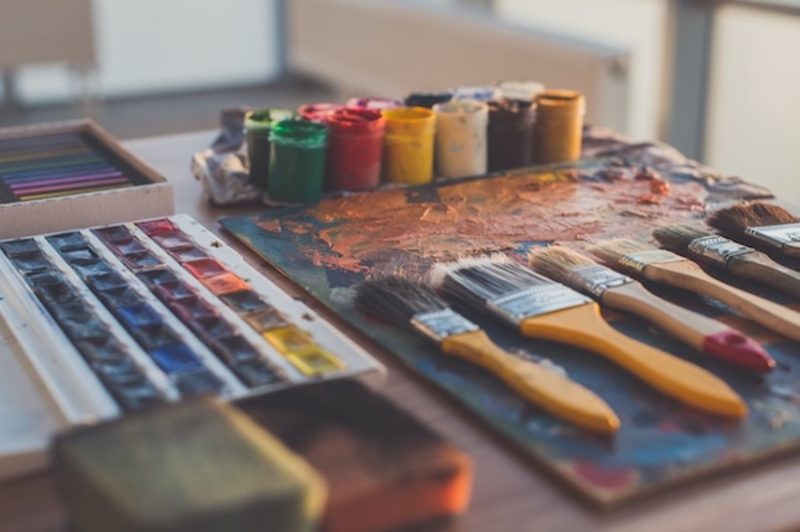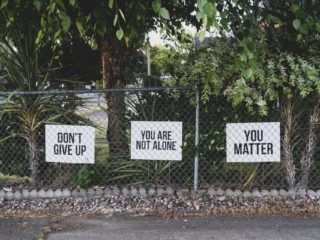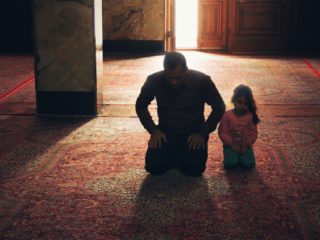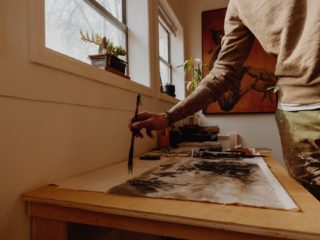Have you ever experienced a recurrent pattern of anxiety without knowing why?
Or felt like expressing yourself and your thoughts but couldn’t find the right words?
Have you ever been to therapy and often kept your guards up no matter how good the therapist was and no matter how much you willingly wanted help?
Have You Heard of Art Therapy?
Throughout history, Art has been used as a mode of communication and self-expression. Cultures and religions across the globe have created visual images of sacred paintings and symbols to narrate their stories and beliefs.
In contrast, psychotherapy has been progressing in the recent years against mental-health stigma, from a marginal treatment option to a central method for personal growth and psychological well-being.
Art Therapy – used interchangeably with Art Psychotherapy – merges art and psychotherapy. In simple words, Art Therapy uses the context of art as a vehicle to meet mental health needs without any previous artistic experiences required to express, contain and alter distress and disruption, as well as to form, re-evaluate and change meanings and understandings.
The initiation of Art Therapy as a distinctive therapeutic approach only took place recently, especially in the MENA region with only few officially qualified Art Therapists.
Consequently, this leads to many questions associated with this type of therapy that we aim to answer in this article.
What is Art Therapy?
The British Association of Art Therapists (BAAT) characterises art therapy as a type of psychotherapy which uses visual art and creativity as the main mode of self-expression to improve emotional and psychological well-being.
Self-expression through the creative processes help people find new ways to gain personal insight and develop new coping skills.
Different Art Therapists implement different psychological theories and approaches (such as cognitive behavioural therapy, psychodynamic therapy and attachment-based psychotherapy) in conjunction with the art as a form of communication. This can be in the form of painting, collage, photography, digital art, sculpting or even simply doodling or drawing stick figures.
Art therapy is available in various settings such as psychiatric clinics, wellness centres, hospitals, in education (schools and universities), prisons, cancer units, corporate settings and other community organisations. It is also accessible to people of all ages: children, adolescents, adults and older adults.
Does It Matter If I Don’t Have Any Previous Art Experiences?
No previous artistic ability or special talent is necessary to participate in art therapy, because the therapeutic process is not about the artistic end result of the work. It is rather based on looking for patterns and symbols in the artwork’s content which reflects the client’s inner world. In other words, the artwork is used as a window revealing narratives and hidden messages in the client’s unconscious mind.
How Does Art Therapy Help?
Using the art making for self-reflection and expressing emotions has therapeutic value for individuals seeking deeper understanding of themselves and their personalities. The practice is an outlet to narrate what is verbally inexpressible in a non-threatening way.
This allows clients to see their inner world from a different perspective and a chance to discuss with the therapist their thoughts as a result of what comes up in the artwork and what the artwork may reveal to them.
Within the therapeutic relationship, the art therapist then begins to process with the client the kind of insight discovered from viewing the artwork to find more adaptive ways to cope with difficult situations.
Additionally, Art Therapists are trained to understand the roles that colour, texture, and various art techniques can play in the creative process and how these tools can help reveal one’s thoughts, feelings, and psychological disposition.
This concludes to two significant parts working together; the art making process and the therapeutic relationship itself. In addition to the safety provided by working with a trained and qualified Art Therapist.
What Can I Expect in Art Therapy?
The general structure of the session is similar to any form of psychotherapy, with the addition of using art as a mode of expression. There are usually 3 important stages of an art therapy session: a brief discussion, followed by two significant parts, the art making stage and post-art making/reflection stage.
Stage 1: Brief Discussion/ Check-in
The beginning of the session consists of talking to the therapist about why help is needed as well as learning what the therapist has to offer to come up with a suitable treatment plan.
If it is a returning client, then this stage will involve a brief discussion or check-in on how you are currently feeling or if any issues have occurred since the last visit.
Stage 2: The Art Making
The art making stage is when the client is invited to spend some time making art, focusing more on the creative process rather than the aesthetic form. During this time, the therapist may simply observe the client’s creative process without interference or judgment. Or they may join in the art-making process, especially if a client has asked to involve the therapist.
Stage 3: Post-Art Making / Reflection
After the artwork is finished- and sometimes during the art making- comes the final and most important stage where the client reflects on their artwork. The therapist’s role is to essentially help clients’ process and think about what the artworks might mean and help them reflect.
By asking the right questions along the lines of ‘how you feel about the artistic process?’, ‘what was easy or difficult about creating the artwork?’, ‘what thoughts or memories you may have had while you were working?’ and ‘how do you think it symbolises anything in your life?’. Generally, questions asked before providing any observations are about the client’s experience and feelings without making any assumptions by the therapist.
It’s important to note that…
Since artworks do not always have fixed meanings, it is always dependent on the client’s perspective and what they personally think their artworks mean. Artworks made (a drawing or painting, or maybe a sculpture or a collage) is up to them and what is often interesting is that the content is usually relevant to what they need to think about or talk about in therapy.
It is also important to highlight that this is not a fixed structure either, as art therapy is very adaptive and encourages spontaneity. Some individuals prefer to work on their piece in total silence, while others prefer to reflect throughout the creative process.
Additionally, sometimes there is more talking than art-making – just talking and thinking with the therapist. Sometimes there is resistance to making art in the beginning which then shifts the structure to talk therapy till a transition to art therapy is made; because not everyone is ready to make art at the beginning.
Who’s It For?
Art therapy is suitable as an effective treatment for a variety of mental and emotional issues, including but not limited to:
- Depression
- Anxiety
- Trauma
- Addiction
- Stress
- Anger
- Eating Disorders
- Pregnancy related issues
- Coping with physical illness
Moreover, art therapy is helpful to anyone seeking personal growth and knowledge of self. In which they pursue therapy because they want to grow in some way or seek self-discovery, not because they are suffering from a certain mental health issue.
Since art is therapeutic in itself, it also helps people who are not used to speaking or find difficulty to articulate or talk about what is going on. Which is why art therapy is believed to be particularly helpful with trauma. According to recent research some parts of the brain shut down when someone experiences trauma. These parts can sometimes be responsible for verbal language and processing, so memories get stored in a visual format. Therefore, art becomes more accessible to externalise those experiences through the creative process in a safe and non-provocative way.
In addition to providing safety, art speaks the same language memories are stored reaching areas which are hard to get to using other psychological modalities.
Overall, the benefits obtained from art therapy depend on how well the process is used and the individual’s willingness to take this journey.
What Makes Art Therapy Unique?
Usually in other types of therapy the therapeutic relationship only consists of client and therapist. In the case of Art Therapy, the artwork provides us with a third dimension that mirrors the level of risk a client is willing to take in the outside world and how they relate with the artwork as well as the therapist. So, the therapeutic relationship then becomes between the therapist, client and the artwork; a triangular relationship.
It is also worth considering the significance of how art therapy indirectly goes beyond our verbal defense mechanisms, such as denial, projection, and repression. They are strategies humans utilize involuntarily on an unconscious level out of protection from anxious and unacceptable thoughts or feelings. Since these defenses can become problematic when applied too frequently, art therapy helps lower them through the creative process. It allows an access to the unconscious thoughts and emotions, bringing them to consciousness.
As a result, clients begin to feel in control again with an understanding of emotions underlying their behavior. Seeing their narrative through the artwork makes it less threatening until the client is ready to directly address these experiences within the safety of the trustful therapeutic relationship.
What Are The Different Models of Art Therapy?
Art therapy sessions can run in person or online, depending on personal preference.
There are three main models of art therapy: individual therapy, group therapy and open-studio expressive therapy.
Individual therapy is usually one-to-one with only the client, the therapist and of course the artwork; making it more focused solely on that one client. A session runs for 50 minutes and usually requires commitment to attend regularly (weekly or biweekly).
Group therapy, as the name suggests, runs in groups of 6-10 people who commit to attend regularly sharing similar issues and struggles (ex: addiction, cancer-support group, prenatal and postpartum issues…etc). It allows individuals in the group to develop self-awareness by listening to others with similar issues and gain relief in knowing they are not alone. A group therapy session usually runs for 1.5 to 2 hours.
Both individual and group therapy can be short-term addressing a specific issue, or long-term for more personal growth or to deal with difficult patterns.
Another model of art therapy is the open-studio expressive therapy which also runs in groups of 6-10 people. However, it does not require any commitment to attend regularly, clients can attend as many or as little as they want. It is available for anyone interested to creatively express themselves through the art-making with the guidance of a certified art therapist. An open-studio session is ideal for anyone wanting to try out art therapy without delving into deep exploration.
In Short…
Art Therapy is a double-sided approach which integrates psychotherapeutic techniques with creative processes to promote emotional and psychological well-being in a safe, contained and non-judgemental environment.
It facilitates a space to express things that might be found very difficult to express verbally. Art making with the guidance of a trained and certified art therapist can enable a better understanding of issues and struggles that affects behaviour and emotional well-being. This leads to long-lasting benefits and support, providing an individual with tools needed to avoid triggers, redirect recurrent patterns, and to overcome any disabling challenges.
References:
- AATA (The American Art Therapy Association)
- BAAT (The British Association of Art Therapists)
- Chui Yee Joy Chong (2015) Why art psychotherapy? Through the lens of interpersonal neurobiology: The distinctive role of art psychotherapy intervention for clients with early relational trauma, International Journal of Art Therapy, 20:3, 118-126, DOI: 10.1080/17454832.2015.1079727
- Helen Greenwood (2011) Long term individual art psychotherapy. Art for art’s sake: The effect of early relational trauma, International Journal of Art Therapy, 16:1, 41-51, DOI: 10.1080/17454832.2011.570274
- Malcolm Learmonth (2009) The evolution of theory, the theory of evolution: Towards new rationales for art therapy, International Journal of Art Therapy, 14:1, 2-10, DOI: 10.1080/17454830903006075
Join The EMPWR Community!
⚡️If you like this article, subscribe here to our EMPWR Guide and be first to receive all our latest articles surrounding mental health in the MENA Region, directly to your inbox, every Sunday.
Be sure to check out and join our global conversation around mental health on EMPWR’s Facebook Community Group!
💭Freelance Submissions & Art/Poetry are accepted here (All articles must comply with EMPWR’s writing guidelines for consideration.)









Comments are closed.